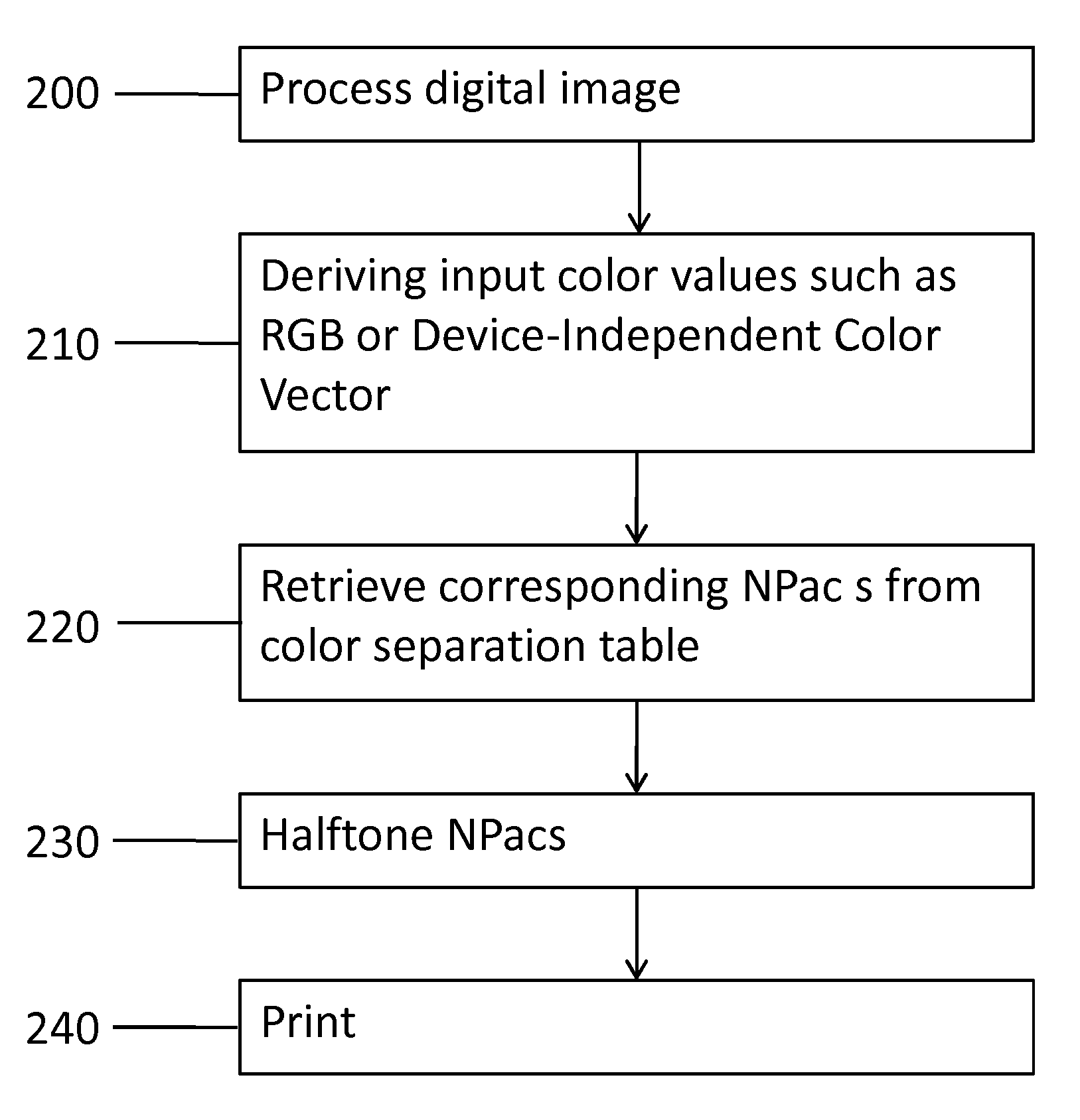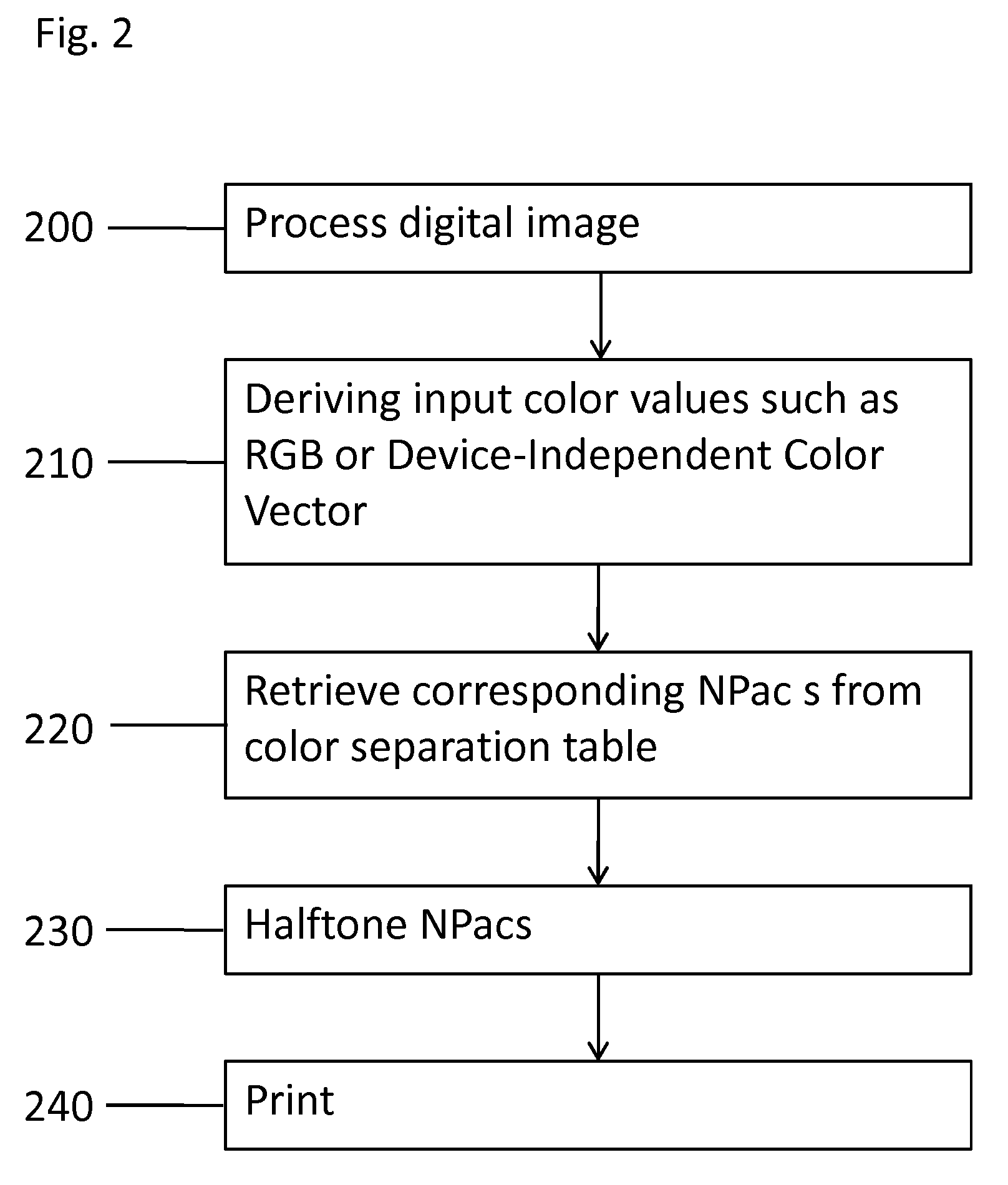Printing system
a printing system and ink amount technology, applied in the field of printing systems, can solve the problems of inability to control the output color of the print, the inability to print relatively dull dark colors, and the inability to print large changes,
- Summary
- Abstract
- Description
- Claims
- Application Information
AI Technical Summary
Benefits of technology
Problems solved by technology
Method used
Image
Examples
Embodiment Construction
[0012]In the following detailed description, reference is made to the accompanying drawings. The embodiments in the description and drawings should be considered illustrative and are not to be considered as limiting to the specific embodiment of element described. Multiple embodiments may be derived from the following description through modification, combination or variation of certain elements. Furthermore, it may be understood that also embodiments or elements that may not be specifically disclosed may be derived from the description and drawings.
[0013]This disclosure describes various exemplary methods and computer products for printing a document in a printing system. In particular, this disclosure describes selecting certain Neugebauer Primaries (NPs) and Neugebauer Primary area coverages (NPacs) to optimize a printing process according to a certain print attribute.
[0014]Use of NPs and NPacs is disclosed in U.S. patent application Ser. No. 12 / 390,214, filed 20 Feb. 2009, not y...
PUM
 Login to View More
Login to View More Abstract
Description
Claims
Application Information
 Login to View More
Login to View More - R&D
- Intellectual Property
- Life Sciences
- Materials
- Tech Scout
- Unparalleled Data Quality
- Higher Quality Content
- 60% Fewer Hallucinations
Browse by: Latest US Patents, China's latest patents, Technical Efficacy Thesaurus, Application Domain, Technology Topic, Popular Technical Reports.
© 2025 PatSnap. All rights reserved.Legal|Privacy policy|Modern Slavery Act Transparency Statement|Sitemap|About US| Contact US: help@patsnap.com



